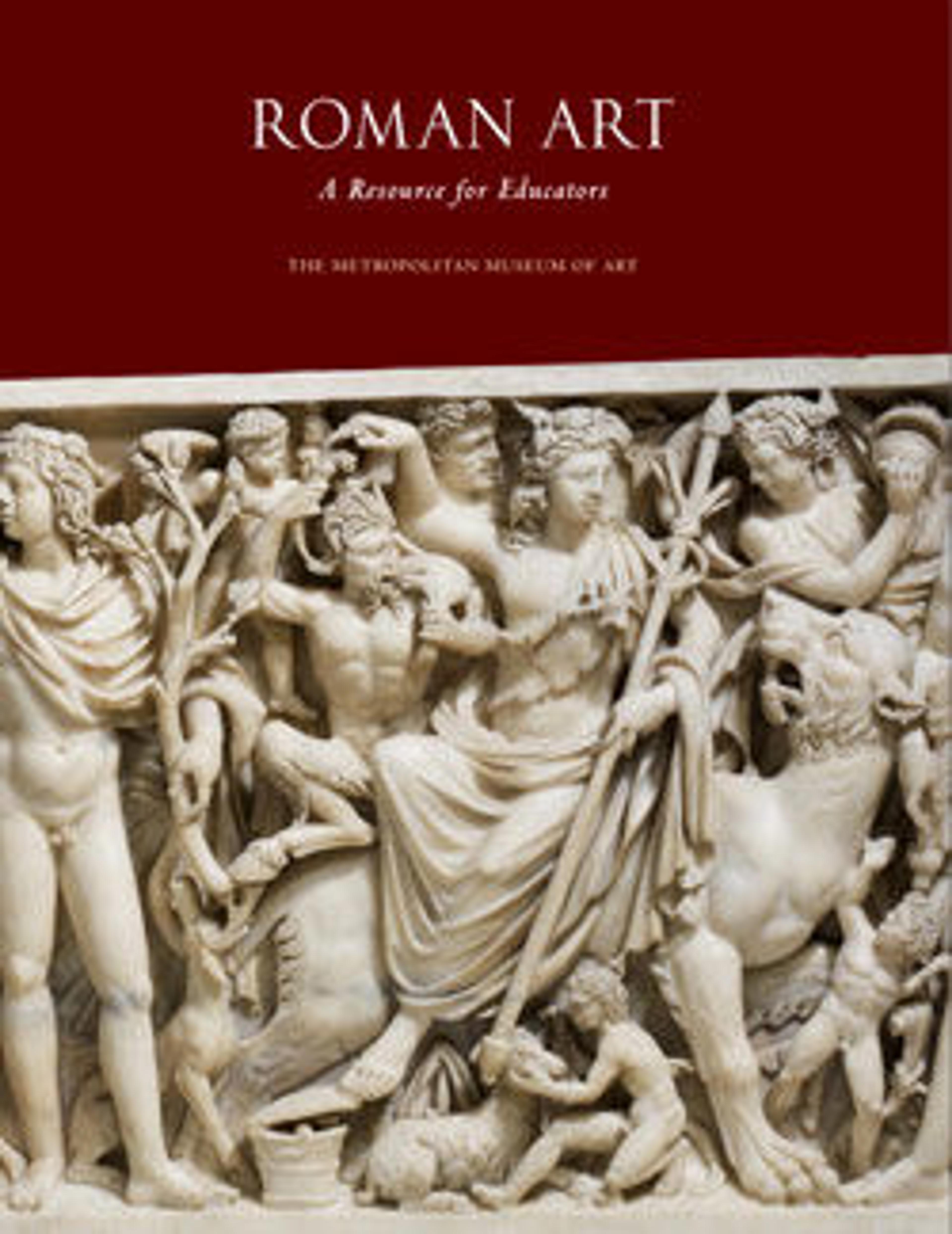Marble fragment of a cinerary urn
The fragment is part of the cinerary urn, 2002.297, and has been reattached to the side.
This Roman cinerary urn is highly unusual in having the spoils of war as its principal theme. Despite the fragmentary nature of the piece, the trophies and piles of weapons and armor that cover the back and sides of the rectilinear box are very striking in both detail and composition. The panels are representative of high-quality workmanship, suggesting that the work was a special commission. Sadly, much of the front, where the inscription recording the name of the deceased would have been, is missing. The urn is said to have been excavated from a tomb near Anagni, southeast of Rome, in 1899. Other marble funerary urns in the Museum's collection belong to much more common types of funerary art, cinerary urns that either resemble actual receptacles (vases or baskets) or are in the form of altars or miniature buildings. In both iconography and craftsmanship, the present urn foreshadows the elaborate sarcophagi of the Mid-Imperial period.
This Roman cinerary urn is highly unusual in having the spoils of war as its principal theme. Despite the fragmentary nature of the piece, the trophies and piles of weapons and armor that cover the back and sides of the rectilinear box are very striking in both detail and composition. The panels are representative of high-quality workmanship, suggesting that the work was a special commission. Sadly, much of the front, where the inscription recording the name of the deceased would have been, is missing. The urn is said to have been excavated from a tomb near Anagni, southeast of Rome, in 1899. Other marble funerary urns in the Museum's collection belong to much more common types of funerary art, cinerary urns that either resemble actual receptacles (vases or baskets) or are in the form of altars or miniature buildings. In both iconography and craftsmanship, the present urn foreshadows the elaborate sarcophagi of the Mid-Imperial period.
Artwork Details
- Title: Marble fragment of a cinerary urn
- Period: Early Imperial, Julio-Claudian
- Date: 1st half of 1st century CE
- Culture: Roman
- Medium: Indurated limestone or fine-grained marble
- Dimensions: H. 10 3/4 in. (27.3 cm); width 9 3/4 in. (24.8 cm); depth 1 1/2 in. (3.8 cm)
- Classification: Stone Sculpture
- Credit Line: Gift of Ariel Herrmann, 2002
- Object Number: 2002.568
- Curatorial Department: Greek and Roman Art
More Artwork
Research Resources
The Met provides unparalleled resources for research and welcomes an international community of students and scholars. The Met's Open Access API is where creators and researchers can connect to the The Met collection. Open Access data and public domain images are available for unrestricted commercial and noncommercial use without permission or fee.
To request images under copyright and other restrictions, please use this Image Request form.
Feedback
We continue to research and examine historical and cultural context for objects in The Met collection. If you have comments or questions about this object record, please contact us using the form below. The Museum looks forward to receiving your comments.
